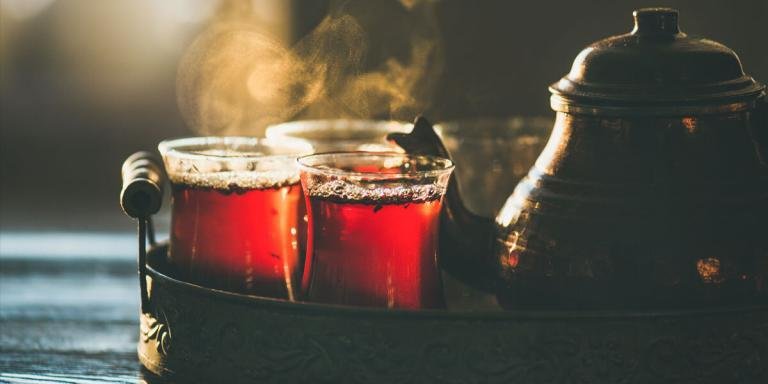
Tale of Two Teas
Today we visited Khedive Palace the former residence of Khedive Abbas II the Egyptian Governor, now a famous Istanbul landmark. The perfect spot to recharge our batteries and of course sample the tea!
‘A meal without wine is like a day without sunshine’, according to a 19th century wine connoisseur. Spending time complementing your celebratory meal with the right wine is like matching your well planned marketing campaign with the right graphic design. Don’t lose your bottle! Trust my wine tasting notes below to make sure you don’t fall down at the last hurdle.
Just as your branding gives a flavour of your product, the front label on a bottle is the most important clue to how a wine is likely to taste. An eye-catching label design can only help to get your product noticed and secure sales. With thousands of brands competing for sales, it’s never been more important to choose the right design agency. Create marketing materials that sparkle!
Several arduous hours of swilling and slurping were involved in writing this wine post! This guide should help you tread through the myriad of grape varieties, giving you a taster of the best. Read on to discover our four favourite red and white wines, so in reverse order…
Origin: Made from the Nebbiolo grape, native to northwestern Italy and well known since the 14th century. Italians call Barolo the ‘king of wines, the wine of kings.’ Taste: When young the flavour is biting due to the tannins from the grape skins, high alcohol and very firm acidity. With time the wine mellows and softens and the flavour is rich and generous. Food: The big, rich flavours are best with pot roast, beef stew, braised lamb and venison.
Origin: No one knew the grape’s origin until the 1980s, so Zinfandel was known as California’s ‘mystery grape’. It turns out to be from southern Italy, where it is called Primitivo. Taste: Full-bodied, rich and vibrant, it smells like a patch of wild blackberries. The flavour is jam-packed with berry fruitiness, exuberantly ripe and juicy, with refreshing zing of acidity kicking in at the end. Food: Hearty foods like roast pork, Italian sausages, barbeque chicken, spare ribs and casseroles.
Origin: For more than two thousand years wine has been produced in high mountain valleys of Rioja in northern Spain. Taste: Tempranillo, the main grape in the blend is very fruity and smells a little like violets. Very smooth and slightly low in acid. Food: Roast lamb, hearty stews, dark poultry like duck or pheasant, liver and onions and barbeque pork.
Origin: Originally from Burgundy in eastern France. A very fussy grape, which now thrives in California, Oregon and New Zealand. Taste: New World Pinot Noirs tend to be slightly fuller in body and flavour. They are soft and smooth but intense and long-lasting, with a flavour reminiscent of black cherries. Food: One of the best wines for food. Great with beef stew, roast beef or turkey, salmon, duck as well as mushroom risotto.

Origin: Steep hillsides along Germany’s rivers, where reflected sunlight helps the grapes ripen. Now planted in cool areas around the world, from Russia to New Zealand. Taste: As they are low in alcohol, they seem light-bodied, but their flavour is long-lasting, with a balance of slight sweetness and crisp acidity. Food: Perfect with cold crab or lobster, with spicy Thai dishes like duck or beef salad. The bigger Alsatian style is great with monkfish, salmon or pork chops.
Origin: Originally from the Loire Valley of France, this grape grows so easily that is has travelled all over the world, especially to America and South Africa. Taste: The dry versions from France are elegant, tart with a vaguely floral aroma. The best versions from America and South Africa have a little green apple crispness beneath the sweetness. Food: French versions with freshwater fish. New World versions go well with salty or spicy party food.
Origin: Originally from France, the grape was brought to northern Italy by medieval monks, and to Oregon in the 1970s by winemakers. Taste: Lively and smooth. The aroma is understated and the acidity tends to be low, so it’s on the mellow side, with a flavour reminiscent of apricots. Food: Light meals and first courses, pasta with pesto or creamy sauces, seafoods, trout and salmon.
Origin: The hills of northeastern Italy, but it really blossomed in the Alsace region of France. It is planted all around the world but California is the only other consistently successful growing region. Taste: Very surprising, the aroma is like wildflowers and exotic spices, with a dry flavour, the California versions are slightly sweeter. Food: The dry ones go well with rich foods like roast pork and game as well as spicy Chinese foods.
Buying – We are extremely lucky to have scores of highly qualified and innovative local wine merchants on our doorsteps. Here are three of my favourite establishments: Waitrose Wine Cellar (UK wide) www.shjoneswines.com (Oxfordshire) www.vinneuf.co.uk (Warwickshire)
Buy a little ahead of consumption, then give your wines a few days to settle before opening. They will taste better for it. Ideally you should keep your bottles out of direct sunlight, away from vibration and at a constant temperature. If you want to keep wine more than six months, lay the bottles down so the corks don’t dry out, which will let the air in and spoil the wine.
Bits of cork floating in your wine? Do not push down hard when inserting the tip of the corkscrew. Try to ‘hook’ it into the cork sideways, then allow the corkscrew to draw itself gently into the cork as you turn.Pour to the centre of the glass, except if you are serving sparkling wine, which should be poured to the side of the glass. Separate wine glasses should be purchased for red and white, with red glasses being more spherical. Sparkling wine should always be served in flutes. Maybe consume the best wine early in the meal, whilst your guests are fully appreciative!
Don’t think tasting is for a few privileged palates, anyone who enjoys a glass of wine can taste wine properly and you don’t need to spit. Put a clothes peg on your nose, and I bet you can’t taste the difference between milk chocolate and cheddar cheese! The bouquet of a wine is even more important than its taste, as more than half of its flavour is contained in its volatile aromas. Take a good sip, taking in enough wine to bathe the whole of your mouth. Notice its initial taste (its attack), what flavours develop next (its middle palate) and its finish.
Design work that always brings the flavour.

Today we visited Khedive Palace the former residence of Khedive Abbas II the Egyptian Governor, now a famous Istanbul landmark. The perfect spot to recharge our batteries and of course sample the tea!

A couple of first cultural experiences were crossed off our list over the weekend. We really immersed ourselves deep into the local culture here in Istanbul!